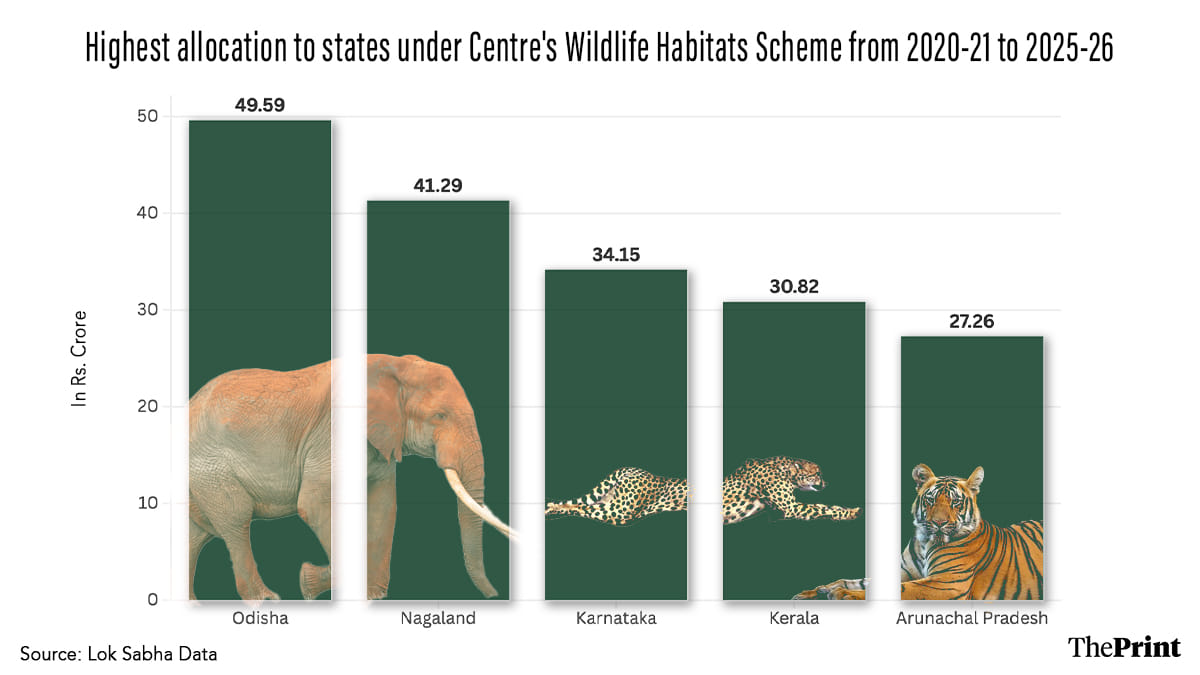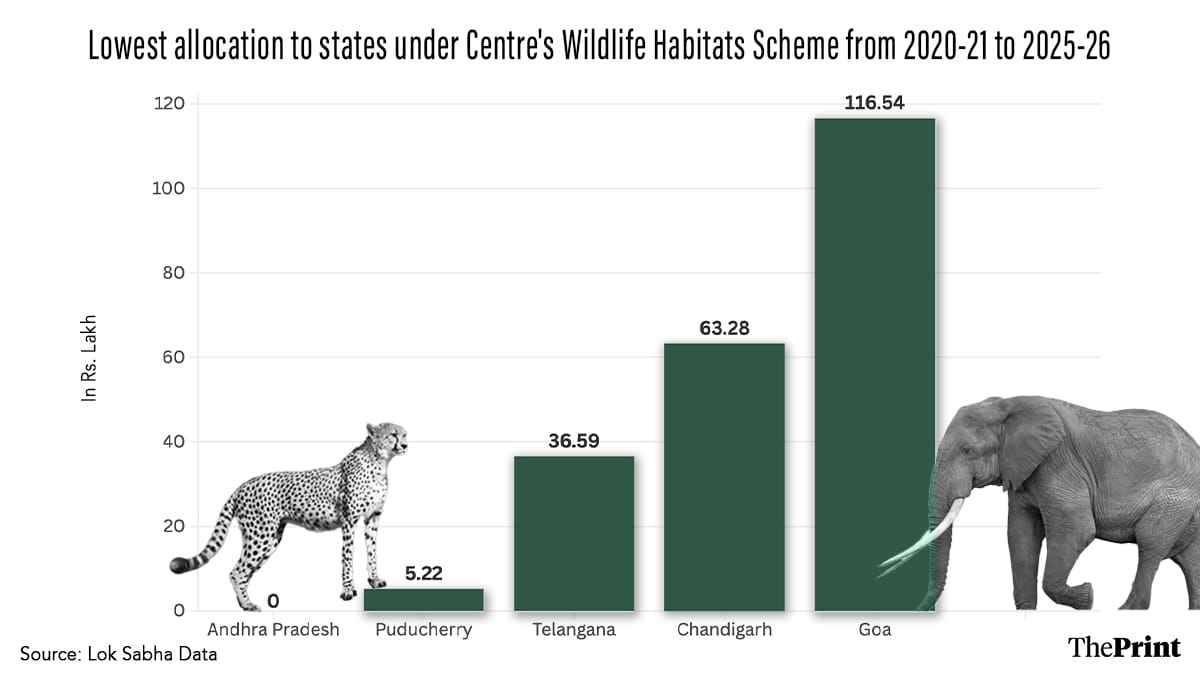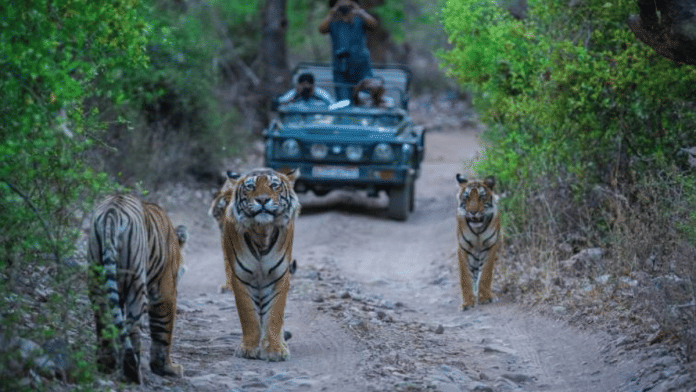New Delhi: In the last 11 years, the number of tiger reserves in the country rose from 48 to 58, while elephant reserves increased from 31 to 33. The data was released by the Ministry of Environment, Forests, and Climate Change (MoEFCC) in the Lok Sabha Monday. Moreover, the number of protected areas—including national parks, sanctuaries, wildlife reserves and other protected forests—increased from 745 in 2014 to 1,134 in 2025.
The ministry also shed light on the imbalance of funds released to states under the Development of Wildlife Habitats Scheme with some states not getting a single rupee in the past five years.
The data shows that Andhra Pradesh received 0 allocation and 0 funds released in the past five years. Telangana too received 0 allocations and releases every year except in 2020-21. Similarly, many states like Bihar, Jammu and Kashmir, Goa, and Jharkhand show years of 0 allocations under the Development of Wildlife Habitats Scheme.

On the other hand, the data shows, Odisha got the most funds—Rs 50 crore—followed by Nagaland, which got Rs 41 crore.
The MOEFCC was responding to a question about the Integrated Development of Wildlife Habitat Schemes—a group of centrally-sponsored schemes that include Project Tiger, Project Elephant, Project Cheetah, and the development and management of wildlife reserves and protected areas in the country. The scheme also includes conservation programmes for 24 species such as the Great Indian Bustard, snow leopards, gharials, and dolphins in the country.

The Integrated Wildlife Habitats Schemes, said the MoEFCC, is a cost-sharing scheme between the states and the Centre. Additionally, the amount of money allocated and then released depends on the Annual Plan of Operations submitted by each state.
However, a note in the Ministry’s response clarified that these numbers/omissions were because of incomplete Annual Plan of Operations submitted by the states.
(Edited by Viny Mishra)
Also read: Kerala’s forests have too many animals. It’s coming at a cost for humans






